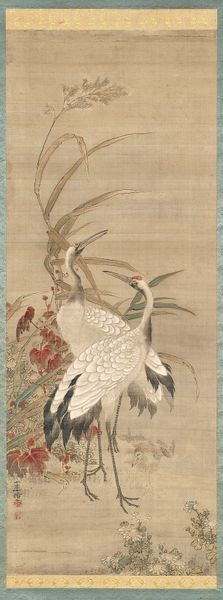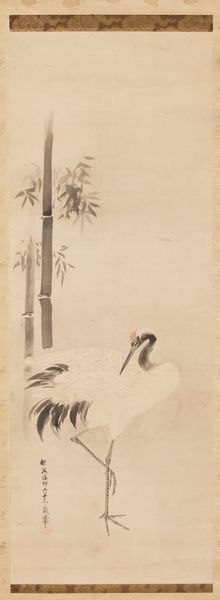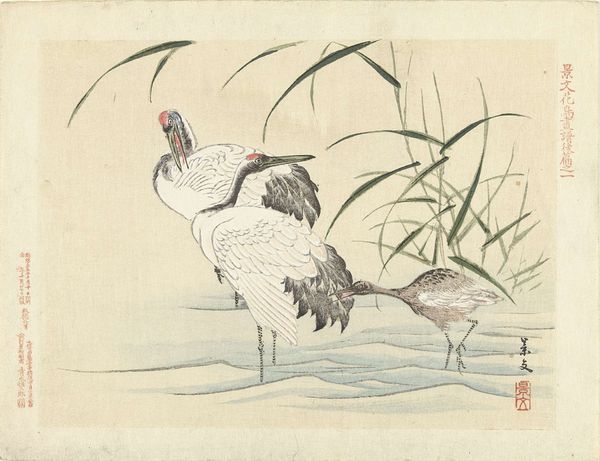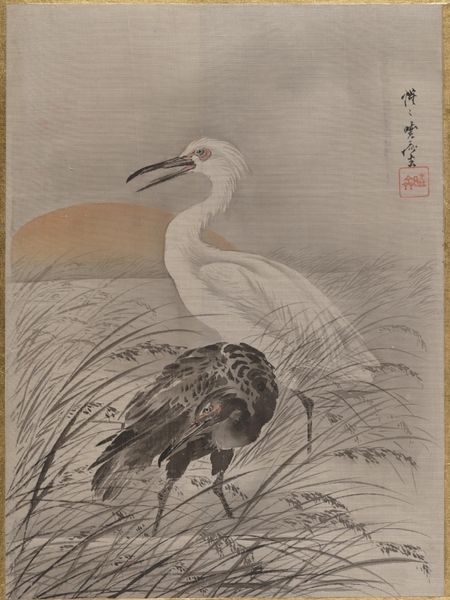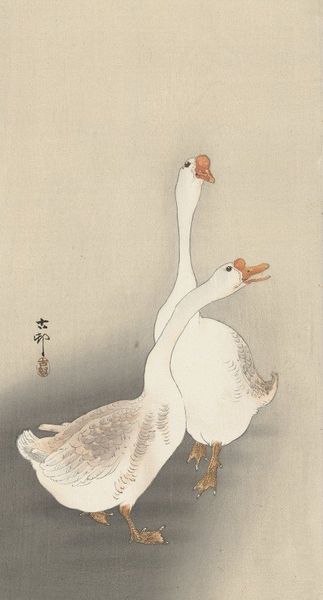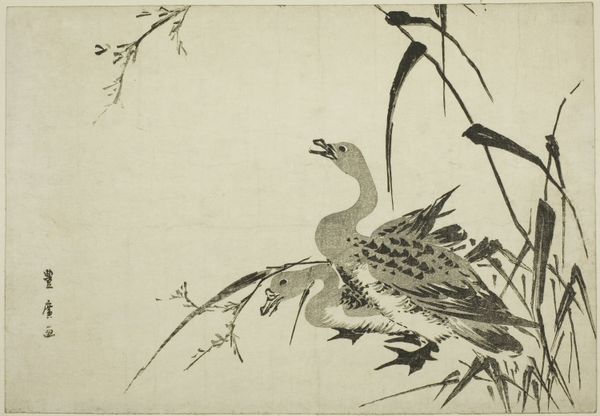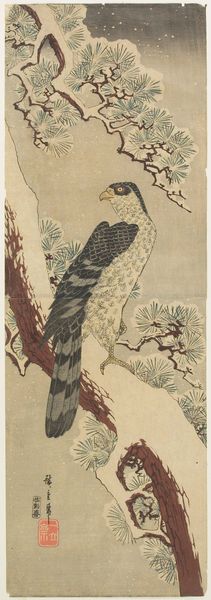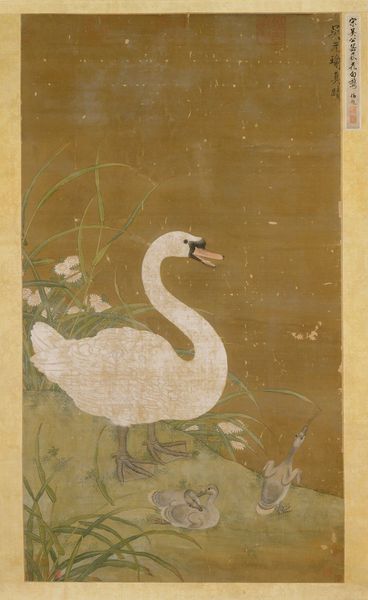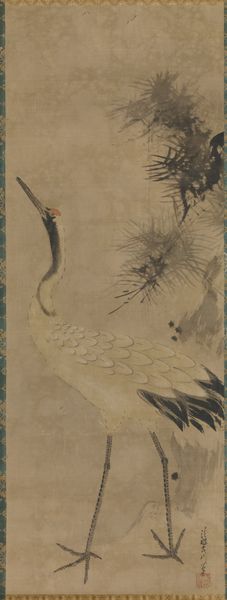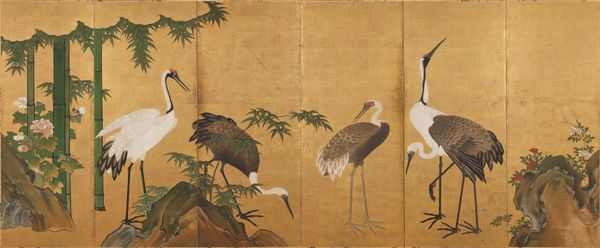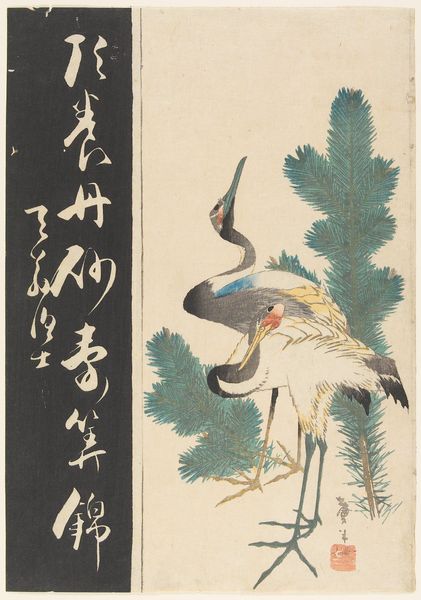
Two Cranes and a Pine Tree c. 18th century
0:00
0:00
painting, hanging-scroll, ink
#
painting
#
asian-art
#
landscape
#
ukiyo-e
#
figuration
#
hanging-scroll
#
ink
#
underpainting
#
orientalism
#
realism
Dimensions: 33 7/8 x 20 5/8 in. (86.04 x 52.39 cm) (image)
Copyright: Public Domain
Maruyama Ōkyo painted “Two Cranes and a Pine Tree” using ink and color on silk during the Edo period in Japan, a period marked by relative peace and isolation under the Tokugawa shogunate. Ōkyo, a prominent figure in the Kyoto art scene, blended Western naturalism with traditional Japanese techniques, reflecting a broader cultural negotiation between isolation and global influence. Cranes, symbols of longevity and fidelity, flank a pine tree, itself representing steadfastness. These symbols speak to the values of the samurai class, who, despite a time of peace, were expected to uphold their virtues. Look closely. Do you notice how the realism in the cranes’ posture contrasts with the stylized pine? These details capture the emotional and cultural complexities of a society in transition.
Comments
minneapolisinstituteofart almost 2 years ago
⋮
Maruyama O_kyo was the founder of a school of naturalist painters in the city of Kyoto in the 18th century. He artfully combined the traditional Japanese decorative compositional approach with elements of Western realism. For this painting of two cranes, O_kyo carefully depicted the birds' plumage and scaly texture of their legs. He also created a convincing sense of space and volume by foreshortening the neck of one of the cranes. Red-crowned cranes were once ubiquitous throughout the wetlands of China, Korea and Japan. Their impressive size, striking coloration, and lively "dance" made them a popular subject among artists. In East Asian mythology, they are believed to live for 1,000 years, and thus became auspicious symbols of longevity.
Join the conversation
Join millions of artists and users on Artera today and experience the ultimate creative platform.
